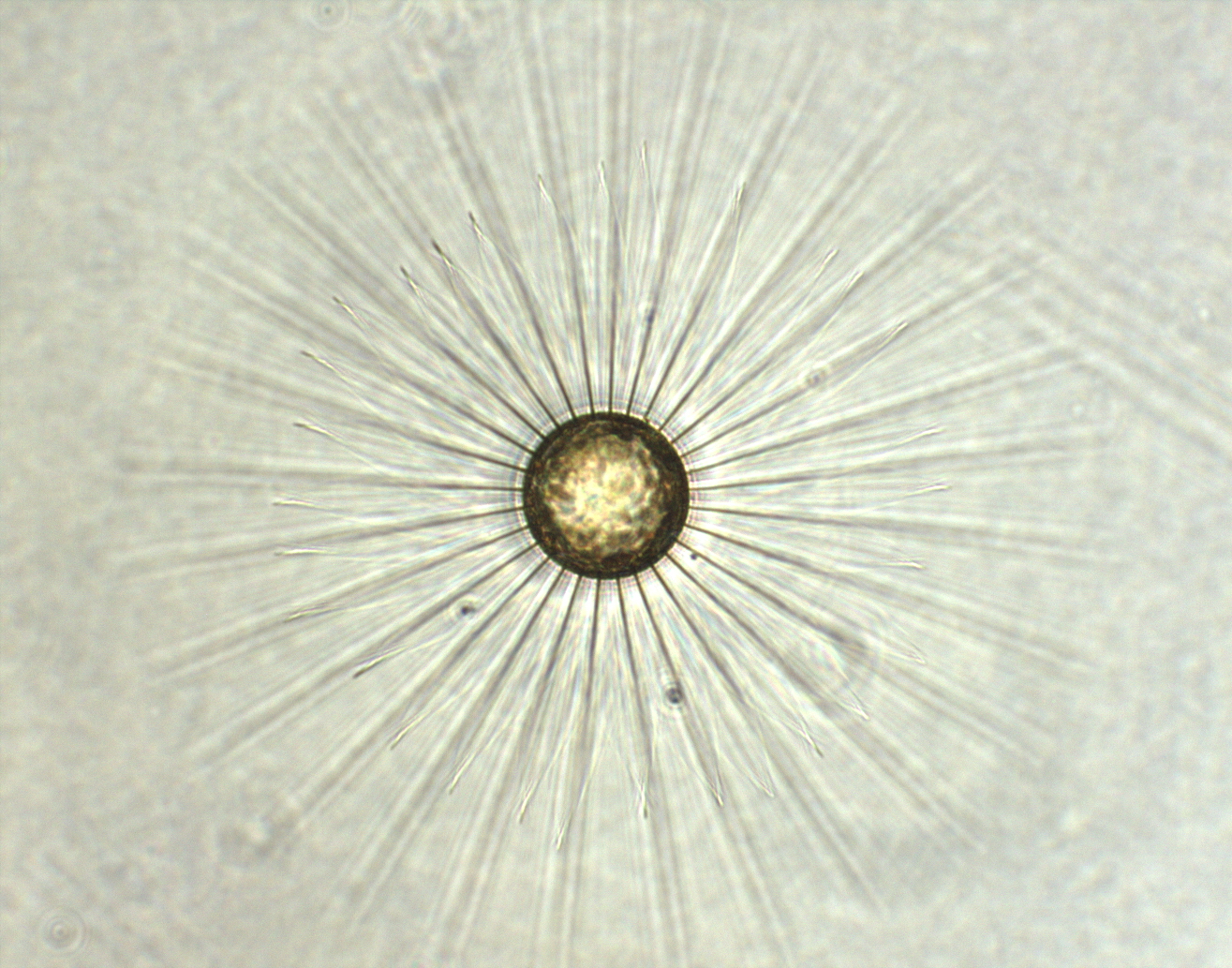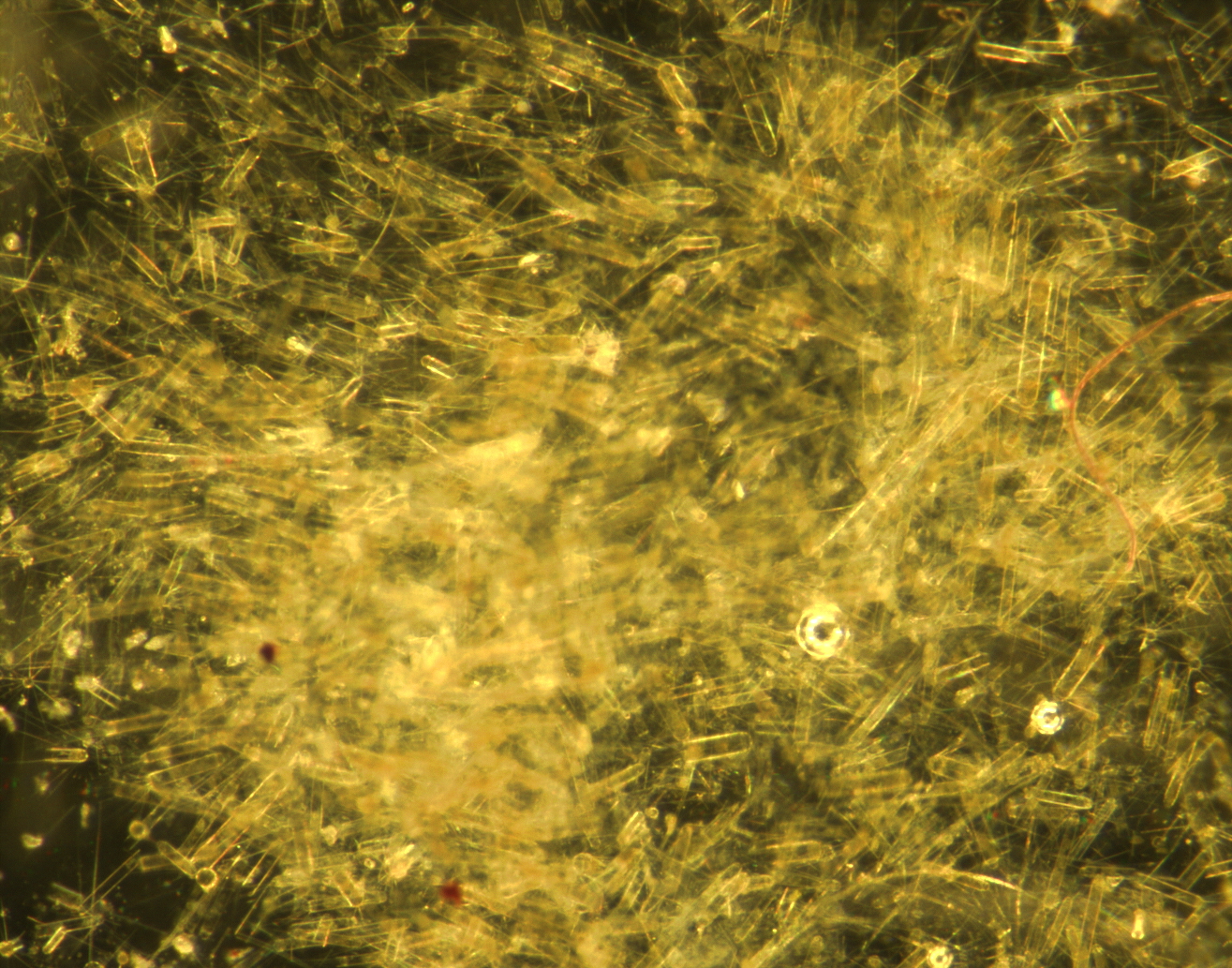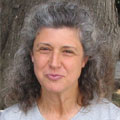The Microbial Loop
The Microbial Biogeochemistry group (B-045) (under the direction of Dr. Hugh Ducklow) is one of the science groups here on board the LM Gould. Our goal is to study the bacteria that live in the water column and serve the important function of cycling elements such as carbon, nitrogen and phosphorous through the ecosystem. This process, referred to as the microbial loop, converts organic matter produced by the phytoplankton and zooplankton into inorganic matter that is used by the phytoplankton for primary production and/or photosynthesis.

Corethron, a type of phytoplankton, highly magnified under the microscope.
 A ball of corethron, less magnified under the microscope.
A ball of corethron, less magnified under the microscope.At every station of the LTER grid the B-045 group takes water samples to analyze for dissolved gasses, dissolved organics and bulk bacterial parameters. The amount of oxygen in the water can give us an idea of the amount of primary and secondary production occurring in the water column. Dissolved organic carbon is also an important parameter to measure because it is the amount of material available for bacterial consumption. We directly measure bacterial production using radio-labeled amino acids, which shows the rate of carbon utilization by the bacteria.
In addition, we preserve samples to measure the amount of bacteria in each water sample. This analysis is done with the use of flow cytometry back at our home institution, the Ecosystems Center, MBL. We also do experimentation onboard involving molecular genetics to look at the diversity of the bacterioplankton community. In this process, we filter water to concentrate bacterial cells to perform downsteam DNA analysis.

Our Microbial Biogeochemistry team. At top center, from left: Chip Cotton, Heidi Geisz, Erin Morgan, Aaron Randolph, and team leaders Matthew Erickson and Kristen Myers. At bottom center are images of the bacterial community, taken with a camera attached to a microscope aboard the vessel. At lower left, Aaron Randolph filters water to concentrate bacterial cells to perform downsteam DNA analysis. At lower right, Erin Morgan “pickles” a dissolved oxygen sample. At top right, Chip Cotton and Heidi Geisz inoculate a set of samples with the radio-labeled amino acid. At top left, an exuberant Heidi Geisz and Erin Morgan sample for dissolved organic carbon.
It has been a very successful and enjoyable cruise. While very busy the group has been able to enjoy several beautiful sunsets.










Hi my name is Jaclyn Brush, and I am a student at the University of Windsor. This summer, I will be doing my undergraduate thesis project on phytoplankton in Cumberland Sound, Nunavut. One of the things we considered looking at was bacterial contribution to productivity. I am still very new at this and a bit overwhelmed at the moment. I was wondering if you could send a bit more information about the methodology for collecting and analyzing samples. We have a limited time frame (two weeks) for the study, however I think it would be really neat to do something a little extra with bacteria.
Hopefully all of this makes sense. I’m having a little trouble finding information right now.
Thank you in advance,
Jaclyn Brush